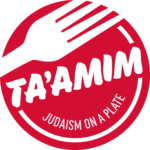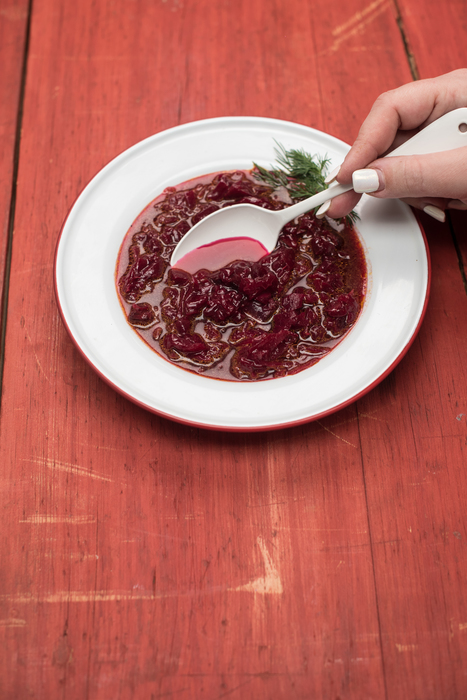Beets were developed in either Italy or Germany in the mid sixteenth century, Eastern Europeans took to the new vegetable quickly as it grew well in the often harsh climate. Beets were added to the everyday Slavic soup adding much needed flavour and colour to an otherwise monotonous diet. Becoming a quintessentially Slavic dish.
Borscht first appears in Jewish sources at the end of the 1500’s. While the soup was everyday fare for the Jews of the Ukraine and southeast Poland, German Jews tended to sneer at the red soup, as well as most other Eastern European fare.
As a wave of Eastern European Jews emigrated to America in the late 19th century, the Jews wanted to do just as their non-Jewish neighbour would do in the sweltering New York summers – escape to the mountains and head to the resorts in the Pocono and Catskill mountains of New York and Pennsylvania, but at the time and for the following century Jews were excluded from most American hotels, especially resorts, due to open and unabashed discrimination.
Seeing an opportunity, starting in the 1890’s Jewish farmers in the Catskills started opening up their homes or building bungalows on their land to house Jewish guests.
During the 1930’s the popularisation of the personal car led to a mass exodus of New York City Jews to the Catskills. The Catskills emerged as a centre of Jewish entertainment and culture and of course Jewish Eastern European Food. In its heyday in the 1950’s there were over 300 hotels and at least 200 boarding houses. Leading to the area being referred to as the borscht belt.
A deliciously rich and sweet soup, traditionally served at both Pesach and Shavuot, the later, due to the prevalence of adding dairy to the dish. It is however also a harvest food, found largely in September and October, making it a good dish for the harvest festival of Succot too – a traditional for both Russian and Polish jews.
Make your own here:
Ingredients
- 1 tablespoon olive oil
- 1 medium onion, chopped medium
- 2 medium carrots, chopped medium
- 2 medium garlic cloves, minced
- 2 tablespoons tomato paste
- 2 quarts beef stock (recipe for homemade beef stock)
- 2 cups meat from stock, shredded into bite-sized pieces
- ½ small head cabbage, green or red, shredded (about 5 cups)
- 1 ¾ pounds beets, peeled and grated (about 5 cups)
- 5 – 6 tablespoons red wine vinegar
- 4 tablespoons sugar
- 1 tablespoon salt
- 1 bay leaf
- ¾ pound small red potatoes (each 1 to 1 1/4 inches in diameter), scrubbed
- Ground black pepper
- ½ cup fresh dill, chopped
Method:
- Heat the oil in a large stockpot over medium heat. Add the onion and carrots and cook, stirring occasionally, until softened but not browned, about 5 minutes. Add the garlic and cook until aromatic, about 30 seconds.
2. Add the tomato paste and stir in 1/2 cup of the stock to dissolve the tomato paste. Add the remaining stock, cabbage, beets, 4 tablespoons vinegar, sugar, 2 teaspoons salt, and the bay leaf. Bring to a boil, lower the heat, and simmer until the vegetables are soft and tender, 40 to 45 minutes. (The soup can be cooled and refrigerated in an airtight container for up to 5 days.)
3. Meanwhile, place the potatoes in a medium saucepan, cover with cold water, and add the remaining 1 teaspoon salt. Bring to a boil, lower the heat, cover, and simmer, stirring once or twice to ensure even cooking. Cook until a thin-bladed paring knife or metal cake tester inserted into a potato can be removed with no resistance, 10 to 12 minutes. Drain the potatoes, cool slightly, and cut into quarters.
4. Stir the meat into the stock pot and remove the bay leaf. Taste and adjust the seasonings, adding the remaining 1 to 2 tablespoons of vinegar, pepper to taste, and 1/4 cup dill. Place 4 potato quarters in each individual soup bowl and ladle some soup over the potatoes. Top with 2 more pieces of potato, add a generous sprinkling of dill. Serve immediately.


